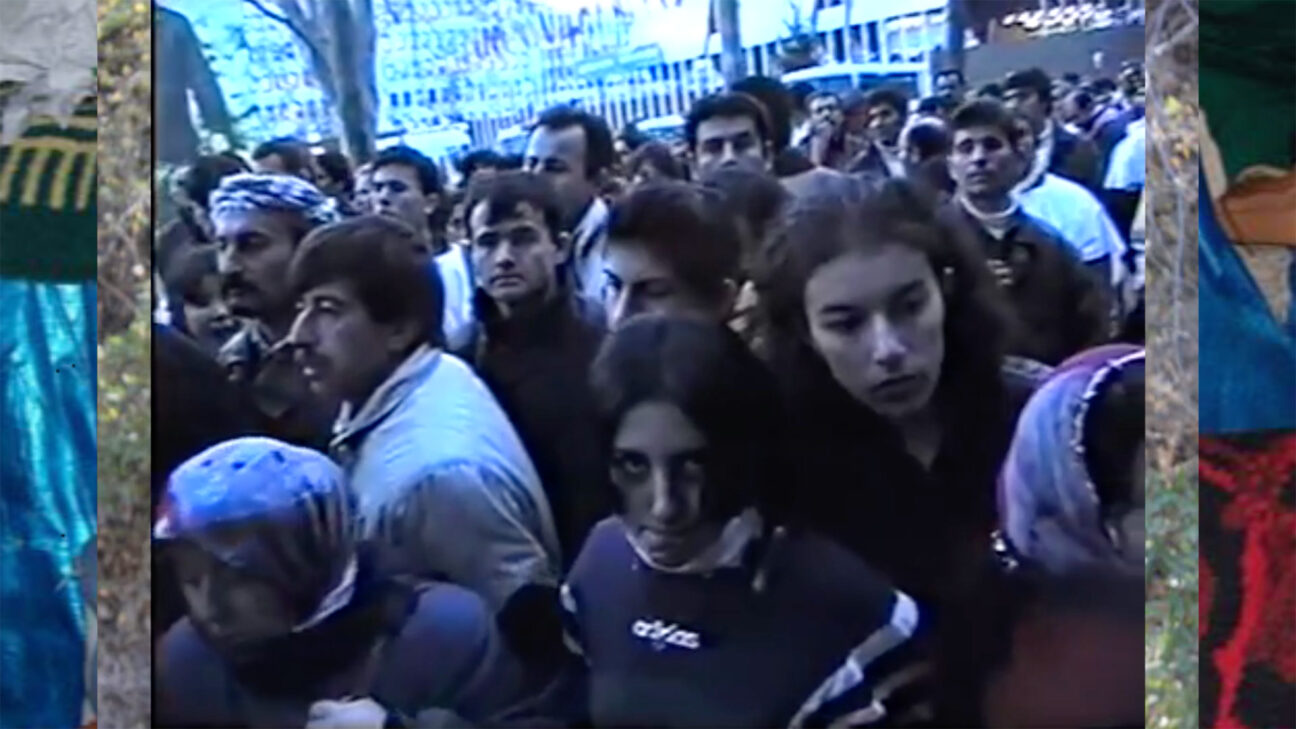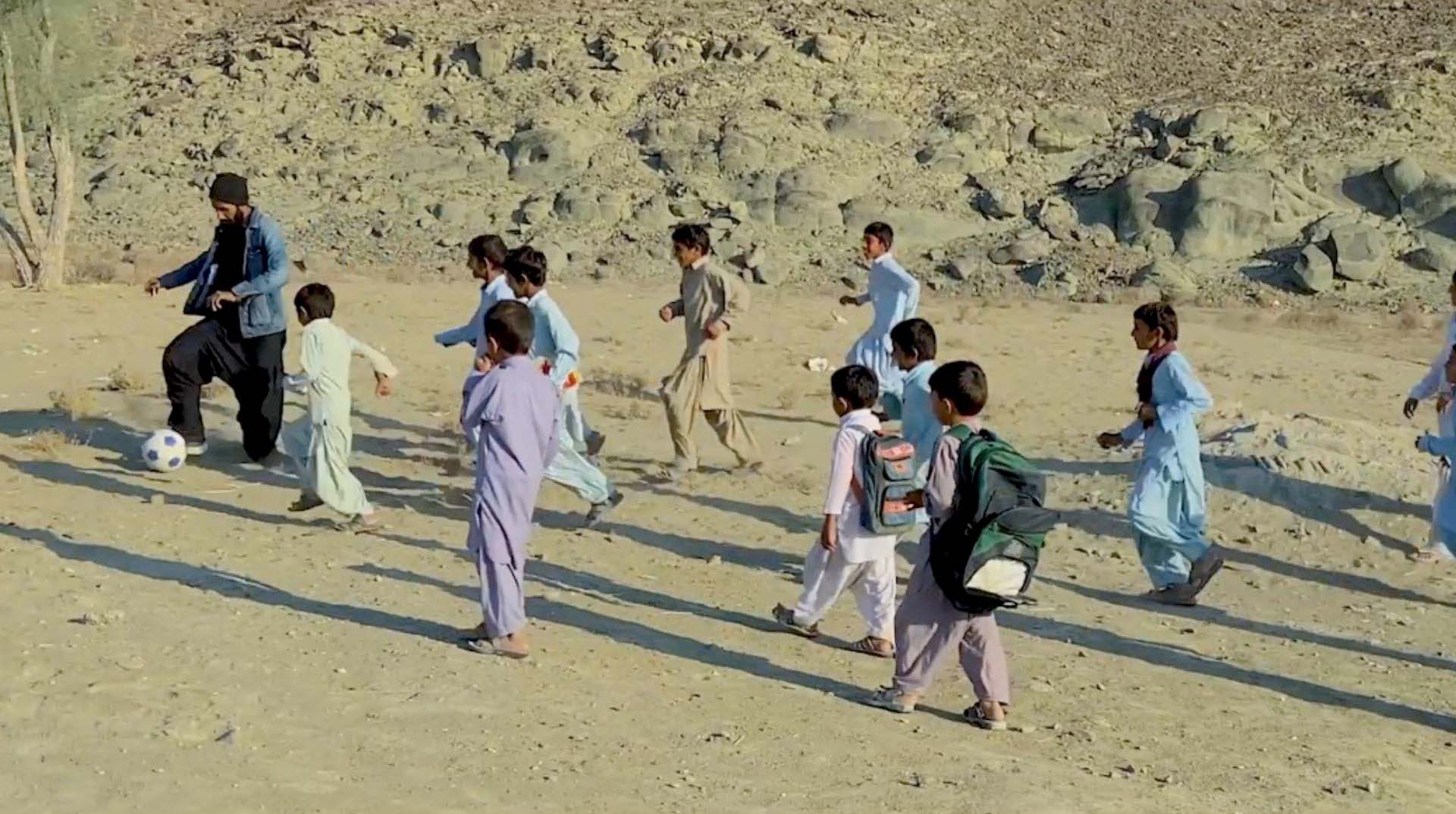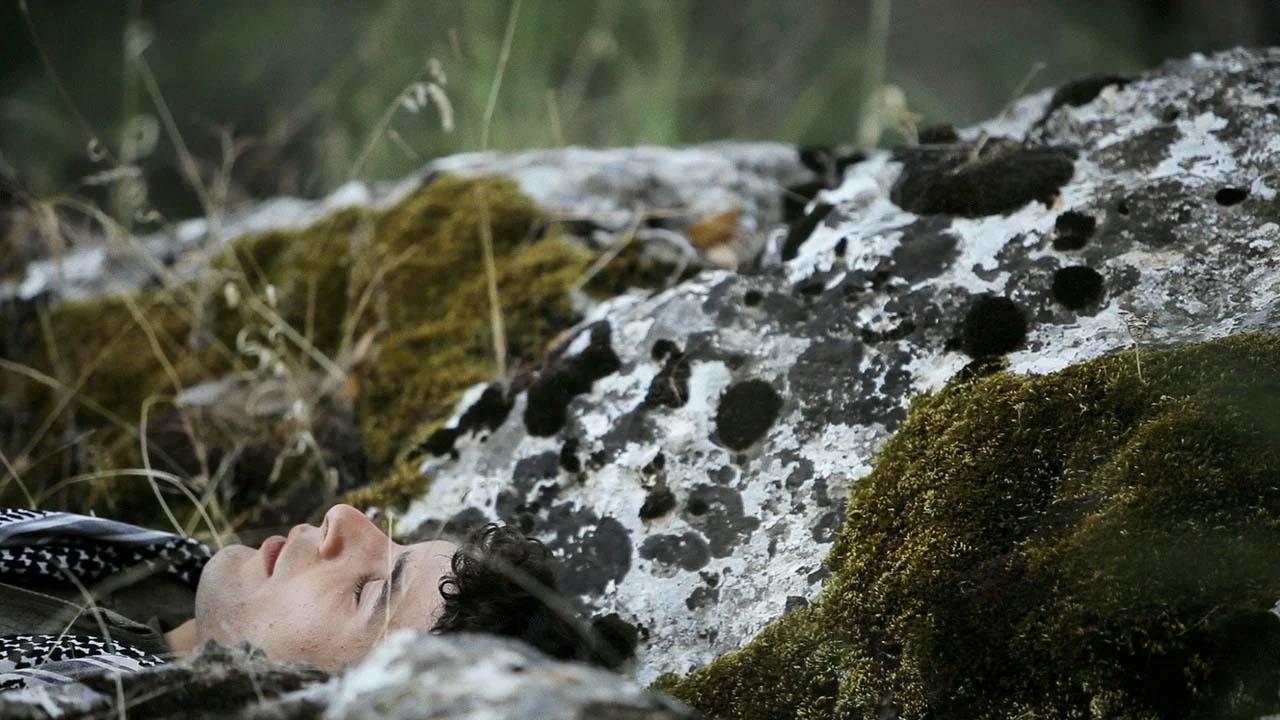After the Land Ends
Kurdish Landscapes and Pakistani Films
In this essay, Emel-Elizabeth Tuulik dissects Kurzfilm Festival Hamburg’s two-sided short film programme, which connected Pakistani cinema with films from Kurdistan, examining what these two regions and their cinematic representations have in common beyond a shared experience of marginalisation.

According to Google Maps, the distance between Diyarbakır, the de facto capital of Turkish Kurdistan, and Islamabad, the capital of Pakistan, is nearly 3,800 kilometers. And yet, the 42nd Kurzfilm Festival Hamburg brings these two regions together, under a shared thematic banner—“Voices”—with one half of the short film programme dedicated to Pakistan, the other to Kurdistan. What is the logic, or perhaps the longing, behind uniting these regions in one cinematic breath? Is it simply because of their shared wound of marginalisation?
When it comes to statistics and data, the two don’t have that much in common. Pakistan’s population stands at roughly 247 million, while the Kurdish population is estimated between 35 and 40 million. One is validated as a country, the other is a semi-autonomous federal region. One issues passports, the other cannot. Pakistan has a granted seat at the United Nations, a nuclear arsenal, a defined place on the map, and a national army. Kurdistan is spread across the territories of Turkey, Iran, Iraq, and Syria, cramped near the border and lacking any representation in global politics.
An unarguable similarity is that both used to be and largely still are clogged by censorship, forced exile, and war; it’s not an understatement to say they face systematic attempts to have the identity of their people eradicated. It is in this conflict, equally personal and political, that “Voices” observes.
Both curators—Razi Uddin of the Pakistan programme, and Deniz Şimşek of the Kurdistan one—assure that the programmes were created individually, without the intention of imposing a unifying framework. “One thing I did notice is that both regions are not just one fixed place; they’re spread across different areas and shaped by many histories. That felt like something the two programmes had in common, even if we didn’t plan them together,” Uddin comments.
For example, Supriyo Sen’s short documentary Wagah (2009) tells a story about the Attari–Wagah border flag-lowering ceremony. The daily military ritual, taking place at the India-Pakistan border, is a symbol of the complex relationships between the two countries. Pakistani soldiers, performing stretching rituals to rival a barre class, combine elegant marching with sharp gestures. This represents national pride and historical rivalry. In this synchronisation, it somehow becomes a ceremony of unison and the regions dream of being reunited as one. The film opens with Manpreet, a schoolboy whose charm is only outmatched by his hustle, as he pays for his education by selling DVDs after class, close to one of the most contentious borders in the world. The film’s strength lies in its ability to evoke a collective human experience—almost free from the political tensions that typically define Indo-Pak relations, largely shaped by the partition in 1947 from British India. Cycles of war and a nuclear standoff are only a few aspects enhancing the post-colonial rivalry that hasn’t yet been outmatched by multiple attempts at peace. Despite such sentiments, strict restrictions on crossing the border remain to this day.
A similar theme of involuntary boundaries, both physical and symbolic, crystallises in Gulzar Nayani’s Against the Rubble (2024). Nearly 1,200 kilometers from the Attari-Wagah border, Karachi’s Gharibabad neighbourhood has endured decades-long governmental neglect, with thousands of working-class people left homeless. The film is set against the backdrop of rapid urban displacement, a term often disguised as “urban renewal.” According to Uddin, Against the Rubble clearly shows how founding laws from British rule are still being used today to control and suppress people, especially working-class communities. Visually raw, its main focus is on the story, and on the two strong women who continue to fight for their home. Ayesha Malik, a resident of one of the twenty-eight neighbourhoods in Gharibabad (Karachi) marked for demolition, together with Fizza Qureshi, founder of a collective working to protect the urban poor of the city from dispossession, tries to fight through protests and community work. Unfortunately, they struggle to bring their efforts to the attention of the government.

© The Land of the Forefathers (Irfan Noor K, 2022)
But, disappearance can manifest itself in different ways: the loss of home, community, and the erosion of religious identity. This is at the center of 298-C (2018), directed by Nida Mehboob. While Nayani’s film depicts the erasure of neighbourhoods through bulldozers and state orders, Mehboob’s work traces an erasure more insidious: legal exclusion masked as national protection. Though 298-C is also known as a cyan tone in colour charts, in Pakistan, it also refers to a blasphemy law targeting the Ahmadi community. According to Uddin, the 298-C is a strong example of how colonial rule left behind systems designed to divide and control. With some of the family members still living in Pakistan, withholding identities and giving out too many details is treated carefully, as it’s essential for their safety. This tension between what can be shown and what must remain hidden situates it at an intersection, where the cinematic experience doesn’t just observe the reality, but negotiates it. Where Against the Rubble documents the physical loss of homes, 298-C lays bare what it means to be denied even the right to belong within one’s own.
This denial of belonging is not just a social one; it is also one of the past. Irfan Noor K’s The Land of the Forefathers (2022) extends the talk from now to then, asking what happens when a land forgets where it comes from. The film shows Noor’s walk with a crew of fellow students through sites in need of care all over Pakistan—a kind of moving dig, with kids playing out in the wild west.
If there’s a unifying logic to the Pakistan programme, it’s not genre or even geography, but resistance. By bringing together different perspectives from various communities, the entire programme signals a subtle, but notable shift: curator Razi Uddin adding their own film in—a decision that raises, in part, an ethical question about curatorial authorship, while also making a more introspective turn. Uddin’s Layers of Identity (2024) asks a complicated question: what happens to a person who leaves it all behind to chase the so-called better life? Blending the personal with their family’s migration story, the film largely reflects on finding a foothold between displacement and belonging. Caught between Karachi and Leipzig, the fragmented montage alternates between a person in their flat, shaving in front of the mirror and pursuing mundane activities, followed by a distant camera. This is contrasted with old footage of colonised Pakistan and images of demolished neighbourhoods. The film doesn’t tell a story so much as it maps an emotional landscape. But, as Uddin explained, their intention with the programme was to give a platform to filmmakers residing in Pakistan. This decision complicates the ethics of curatorial authorship. To include only one film from a Pakistani person residing abroad, namely, their own, arguably makes it ethically questionable amongst other filmmakers with similar status who weren’t even given a chance. That aside, unlike the clear activism in Nayani’s and Mehboob’s work, Uddin’s film is quiet, introspective, and lies heavily in the solitude one feels. It doesn’t call for protest, but instead asks us to sit with the discomfort of identity that doesn’t quite fit anywhere.
On a personal note from yours truly, that similar sense of unease and ambiguity about my own roots led me to ask my Kurdish father what Kurdistan meant to him. He laughed softly and said, “Pain and mountains.” Perhaps that’s as precise a local definition as any—raw, unpretentious, and not too concerned with geopolitical niceties. It’s also a useful entry point into the second half of the “Voices” programme: Kurdistan. Like Pakistan, Kurdistan is a region subjected to cartographic cruelty and chronic erasure. In these films, borders are not abstract lines but wounds on a map—visible, infected, and still bleeding. “Kurdish cinematic identity is plural and these films are a testament to that,” says the curator Deniz Şimşek.
Naghmeh Abbasi’s almost half-hour-long essay film Landscape Suspended (2022) opens with a meditative, slightly imperfect video frame of the mountains. Within the first few seconds, the film introduces a stylistic element that creates a pattern: each frame transition is marked with a mouse click, almost placing the viewer in the role of the clicker, seemingly in control of the film’s progression. Yet despite this sensation, all the viewer can do is follow where the film leads them. Kurdish men wearing their şalvar (wide-legged pants) cultivate the dry earth in the backdrop of mythical mountains. Quiet landscapes guided by a female narrator through night-time Kurdistan—both literal and political—revealing how the state leaves Kurdish roads and lives in darkness. To follow the somewhat distant sorrow, the narrator recites fragments from prison letters by Farzad Kamangar, a Kurdish human rights activist, and A Short Philosophy of Birds, a book of twenty-two life lessons and wisdom inspired by how birds live. Rather than synchronising with the visual narration, the voice becomes an abstract backdrop, a body of its own, creating a dreamy combination where image and language drift together without ever fully merging.
Perhaps the most stylistically distinct reimagination of what an essay film can be comes from Nafis Fathollahzadeh’s Khabur (2023). Named after the Khabur river, a tributary of the Euphrates flowing through modern-day Syria, the film courageously explores the afterlife of colonially stolen archeological objects. Archived photography from an excavation site then shows the path of an archeological collection from the Khabur River valley to the Pergamon Museum in Berlin, whilst subtly calling out colonial art collections. This is clearest in the first part, where instead of just showing what was in colonial-era photographs, Fathollahzadeh shows small bits one by one. The viewer experiences the images as though peering through binoculars, which nudges our perception of information. This act of limiting the total access of initial visibility slightly breaks the conservative way of presenting archival material. The film then makes a small but clear hit on the big museums that maintain and represent colonial possessions, like Berlin’s Pergamon Museum, which receives more than 800,000 visitors every year. Crucially, the film is narrated by Sozdar Jafarzadeh from the imagined perspective of the archaeological statues. The statues are faced in front of a map of their homeland, whilst a bunch of tourists with tour guides pass them. Although the setting shifts to another time and place, Khabur anticipates some of the ethical concerns also explored in the Berlinale Golden Bear winner Dahomey, by Mati Diop. Both films wrestle with the looting that occurred in the colonial period and question the authority of Western institutions that display these objects to this day.
This same spirit of resistance, but stripped of dialogue or text, runs through Savaş Boyraz’s Meanwhile (2014). Shot during the brief period of peace talks between the Turkish state and the Kurds, the film follows a group of guerrillas as they climb the mountain and eventually settle around the fire amidst the forest. A woman sings as the others stare into the endless abyss that the fire holds. We see close-ups of Kurdish people, warm light softening their faces, as they fill the starry night with traditional songs and dances around the flames. A film of natural simplicity that can easily capture the pain and entrapment Kurds hold, felt deeply through the quiet intensity.

© Meanwhile (Savaş Boyraz, 2014)
This poetics of pain continues in Rojda Tuğrul’s A Turtle in Ten Seconds (2023), which translates quiet violence into a slow, deliberate route of a lone turtle that crawls from the Tigris to the Persian Gulf. The narrative is loosely based on a real event, in 2008, in which the Turkish military came up with a plan to build “security dams” along the Iraqi border, because flooding entire valleys to obstruct guerrilla movements apparently made strategic sense. It’s slow, absurd, and devastating. Subtitled like a silent protest, with archaic drums beating in the background, the film unfolds in a sketchbook where lines become limbs, and limbs become metaphors. Meanwhile, the Turkish government went the extra mile and banned species names that sounded too Kurdish, because clearly, taxonomy is a national threat and the endangered Kurdish language is an obvious rival to state power. It’s a slow-motion, sugarcoated cultural genocide—gentle enough to avoid the media’s attention. No protests, no waves of Kurdistan flags popping up on Instagram bios, possibly because there isn’t an appropriate emoji, yet the terror continues as it has for decades.
But then there’s Leyla Yenirce, who’s flat-out had enough of slow-paced, sanitised portrayals of resistance. Her rapid-fire, punk, slideshow-styled short Being Strong is Hard (2022) captures attention immediately, as an edgy ambient up-beat track starts playing. It belongs in a contemporary art museum. It tears through the silence with a relentless collection of created and archival images: Kurdish women resisting, marching, mourning, fighting. Built from her own photos and found footage, Yenirce’s work feels like a wild visual revolt, a never-ending reel that refuses to be paused or silenced. It’s like banging your head against a wall during a manic episode. While Tuğrul’s turtle fights itself through the circle of evolutionary oppression, Yenirce’s montage sprints, fueled by rage and possibly a hefty amount of steroids. It’s loud, fierce, and unforgettable, definitely a stand-out in both its soundscape and its visuals. Together, these films form a resistance loop, where one is slow and meditative, the other fast and furious.
While narratively compelling, the films are perhaps less likely to assert a cinematic presence unto themselves. A common beige palette and aesthetic iteration—partly geographical and partly according to international tastes—give the programmes a monotone visual value, making it mostly difficult to distinguish one work from another. But maybe the visual sameness is not quite the point. As Uddin noted, “existence itself is political for South Asians. In contexts where filmmakers rarely see each other’s work, let alone share international platforms, the very act of telling one’s story becomes political.” This perspective echoes Şimşek’s view that “since many states criminalise essential aspects of Kurdish identity, experimental, self-producible forms of cinema may become a necessary way to resist reliance on state institutions.” While these films may not offer formal innovation, the urgency and necessity of their narratives surpass aesthetic limitations. To focus on storytelling rather than the storyteller is to overlook the programme’s deeper imperative. This is less a cinematic showcase than a vital assertion of presence.
